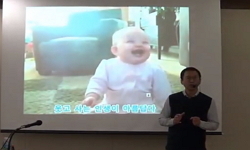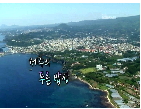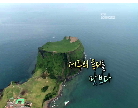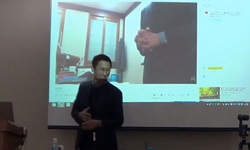목적 본 연구에서는 지역적 관점에서 초등 음악교과서에 수록된 제주 관련 제재곡과 제주민요의 특징, 제주어의 분포와 표기 및 문화와 축제에 대해 파악하고, 문화 정체성의 바탕 위에 제...
http://chineseinput.net/에서 pinyin(병음)방식으로 중국어를 변환할 수 있습니다.
변환된 중국어를 복사하여 사용하시면 됩니다.
- 中文 을 입력하시려면 zhongwen을 입력하시고 space를누르시면됩니다.
- 北京 을 입력하시려면 beijing을 입력하시고 space를 누르시면 됩니다.

지역 정체성을 통해 바라본 초등 음악교과서 분석 = Elementary music textbooks viewed through regional identity: Focusing on the Jeju area
한글로보기https://www.riss.kr/link?id=A108488379
- 저자
- 발행기관
- 학술지명
- 권호사항
-
발행연도
2023
-
작성언어
-
-
주제어
제주 ; 제주어 ; 제주민요 ; 제주신화 ; 음악교과서 ; Jeju ; Jejueo ; Jeju folk songs ; Jeju myths ; Music textbooks
-
KDC
373
-
등재정보
KCI등재
-
자료형태
학술저널
-
수록면
121-138(18쪽)
- DOI식별코드
- 제공처
-
0
상세조회 -
0
다운로드
부가정보
국문 초록 (Abstract)
목적 본 연구에서는 지역적 관점에서 초등 음악교과서에 수록된 제주 관련 제재곡과 제주민요의 특징, 제주어의 분포와 표기 및 문화와 축제에 대해 파악하고, 문화 정체성의 바탕 위에 제주문화의 전승, 보존과 발전이라는 측면에서 교과서 개정의 방향과 과제를 모색한다.
방법 초등 3~6학년 총 4개 학년 2015 개정 음악교과서 34권을 분석, 서술하고 있는 제주와 관련된 모든 내용을 추출하였고, 악보가 있는 제주 관련 제재곡, 악보와 무관하게 서술된 제주관련 모든 곡을 확인하고. 제주어를 포함한 제주와 관련된 모든 내용을 추출하여. 현황 및 문제점 도출에 집중하여 분석하였다.
결과 교과서 한 곳을 제외하고, 제주 관련 내용이 비교적 충실히 수록되어 있고, 일노래가 많으며, 주로 음악적 특징을 규정하지 않고, 제주도 특유의 사투리로 구성된 향토색이 짙은 민요로 서술하고 있다. 다양한 제주어의 쓰임과 교과서마다 제주어에 대한 해석과 표기에 차이가 있음을 확인할 수 있고, 제주 칠머리당영등굿과 제주해녀문화와 관련된 내용이 수록되어 있다.
결론 다름을 인정하고, 다양성의 관점에서 교육이 이루어져야 하며, 부정적인 역사적 고립이 아닌 보존에 있어 긍정적이었던 다양한 제주문화의 교육적 의미를 생각하며, 향후 음악교과서 편찬에서의 제주어, 제주민요, 제주 신화를 명확히 하는 작업이 필요하다.
다국어 초록 (Multilingual Abstract)
Objectives From a regional perspective, Jeju-related songs and Characteristics of Jeju folk songs included in elementary music textbooks, Understand the distribution and notation of Jejueo, culture and festivals. Based on cultural identity, we seek t...
Objectives From a regional perspective, Jeju-related songs and Characteristics of Jeju folk songs included in elementary music textbooks, Understand the distribution and notation of Jejueo, culture and festivals. Based on cultural identity, we seek the direction and tasks of textbook revision in terms of the transmission, preservation, and development of Jeju culture.
Methods Analysis of 34 music textbooks revised in 2015 for a total of 4 grades from 3rd to 6th grade of elementary school, All contents related to Jeju being described were extracted, Jeju-related songs with musical scores, and all songs related to Jeju described regardless of musical scores were checked. By extracting all contents related to Jeju including Jeju language. It was analyzed by concentrating on deriving the current status and problems.
Results Except for one textbook, Jeju-related contents are relatively faithfully recorded, there are many work songs, mainly musical characteristics are not defined, and they are described as folk songs with a strong local color composed of Jeju-do's unique dialect, and various Jeju words are used. It can be seen that there are differences in the interpretation and notation of Jejueo in each textbook and Jeju Chilmeoridang Yeongdeung-gut and Jeju Haenyeo culture.
Conclusions Differences must be acknowledged, education must be conducted from the perspective of diversity, Thinking of the educational meaning of various Jeju cultures that were positive in preservation, not negative historical isolation, In the future, it is necessary to clearly describe Jejueo, Jeju folk songs, and Jeju myths in the compilation of music textbooks.
목차 (Table of Contents)
- Ⅰ. 서론
- Ⅱ. 선행연구
- Ⅲ. 분석방법
- Ⅳ. 결과분석
- Ⅴ. 결론 및 제언
- Ⅰ. 서론
- Ⅱ. 선행연구
- Ⅲ. 분석방법
- Ⅳ. 결과분석
- Ⅴ. 결론 및 제언
- 참고문헌
동일학술지(권/호) 다른 논문
-
간호대학생의 임상실습 교육 유형에 따른 문제해결능력, 의사소통능력, 자기주도적 학습능력 비교
- 학습자중심교과교육학회
- 원미라(Mi-ra Won)
- 2023
- KCI등재
-
초등 도덕 교과서 삽화에 드러난 ‘성역할 및 성 형평성’ 연구
- 학습자중심교과교육학회
- 김지현(JI HYUN KIM)
- 2023
- KCI등재
-
- 학습자중심교과교육학회
- 박근아(Geun A Park)
- 2023
- KCI등재
-
- 학습자중심교과교육학회
- 김효원(Hyowon Kim)
- 2023
- KCI등재




 스콜라
스콜라






